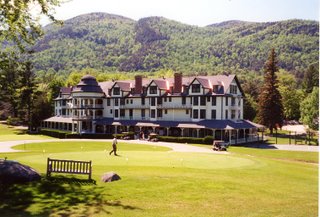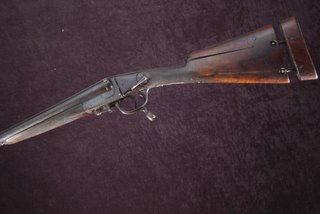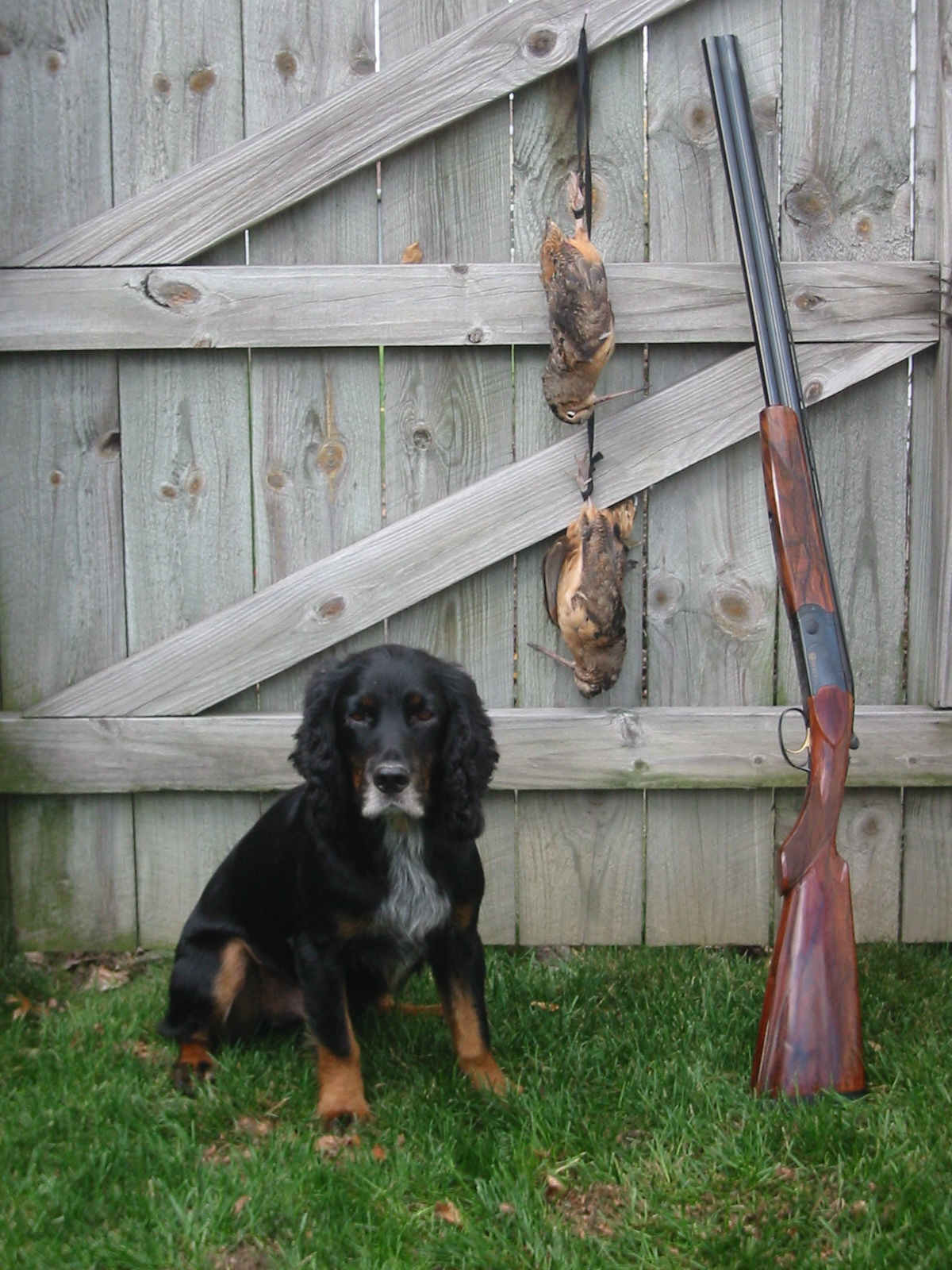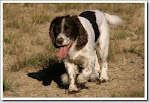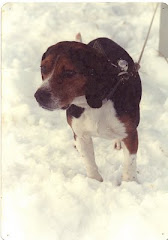The temperature was just above 70 degrees, and the cover in the field we drew was knee to shoulder high. Thankfully a thick overcast kept temperatures from soaring. With mixed goldenrod and young redbush interspersed with the odd singleton oak or pine, the field offered a realistic but hot hunting experience for the kids. After the Mentor explained the ground rules which stressed safety, I gave a brief description of my 2 year old English Cocker, explaining how he hunted, what the kids could expect, and how I wanted the gun to work with me. After the customary teases from friends and hangers on – “Hey, Mister, where’s the other half of your dog?” – I hupped Gordie, removed his lead and cast him off.
For all of you who have had your dog teased because (s)he was a little different from what was expected – too small, too fat, too old, too slow, whatever – This One’s For You. Gordie swept the cover before us 12 yards right, then 24 yards across to the left, and so on as we windshield wipered our way up wind. When the bird took off rising slightly and just a bit skewed to the right of straight away, the young hunter did a very nice job identifying it as a rooster, making sure that both people and dog were clear of his shot, and fired the single round I’d given him.
I thought he’d missed as the bird glided down in heavy cover across the field at the edge of a wooded area. The gallery milled about, and we all jabbered a bit, trying to decide what had happened. I have not steadied Gordie, so I knew he was up ahead in the region where the bird landed. I was about to recall him when a fellow I trust said he was pretty sure the bird had dropped a leg, indicating a hit. So I held off on the whistle and gave it a moment’s thought.
I only had a moment before the goldenrod parted in front of us and a very hot, burred up Cocker presented me with a still flapping rooster. The oohs and aahs from the former non believers was more than adequate repayment for the teasing they’d given earlier.
We then swapped kids and began again. This youngster demonstrated remarkable restraint in not shooting at either the hen that PF likes to set just for the educational opportunity, or at the rooster that flew over the gallery. I was glad that he was shortly rewarded with a nice pair of roosters. Here’s a photo of father and son with smiles all around.

Today I sat with friends and watched the locals win their televised football game, then dressed around 3:45 pm and took Gordie back to the club to see if any of those birds just might have escaped yesterday. It seems that a lot more than a few were available. Gordie worked his first field nicely, and made a nice retrieve of the straight away hen I chopped off with the new Benelli Ultra Light. After a bit more work, I decided to work a field adjacent to our large pond so that Gordie could enjoy frequent cooling swims. It didn’t take long for Gordie to boost a rooster from some dense cover on the bank. It flew landward from the pond, offering me a right to left. I let the bird get out a bit and suddenly the Benelli was two for two. Gordie dropped his retrieve short and sat panting. So I picked up the bird, gave him some encouragement, water and rest. When we started again, I decided that I’d only take one more bird. Gordie would have to flush it such that it flew out over the pond, thereby giving him a chance for a coolly successful retrieve.
It was not hard silently to salute the first rooster that Gordie flushed over the cornfield into the forest. Nor the second and third. By the fourth and fifth, however, my discipline was fading like April snow on the morning Honey Wagon. So when Gordie nicely jumped a long tailed rooster that squawked up and off across the sun, my resolve was toast. When Gordie brought this bird all the way in, I loved him up, sent him into the pond, and unloaded. All in all, a nice two-day prelude to the season.
I bought the Benelli Ultra Light 12 ga autoloader at the end of June. This was my first experience “hunting” with it. I used the factory’s IC choke for the 3 shots out to 30 yards. I may pop in the Mod when snow knocks down the cover. But Gordie seems to work closely enough that I can use IC with great comfort. I was using the rather beefy Remington Shur Shot Heavy Field load. This is a 3.25 dram, 1.25 oz. Load, in this case of #7.5 lead. The “longitudinal” recoil into the butt pad was insignificant. There was a bit of jump in the butt stock which massaged my schnozz with my thumb. The 3 dram 1 oz. loads I intend to use in this arm for ruffed grouse will behave just fine.


